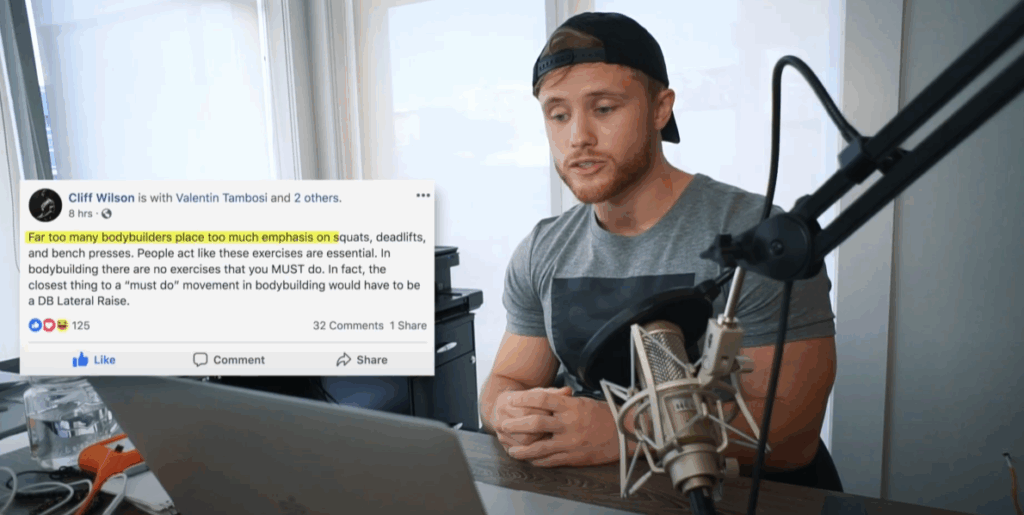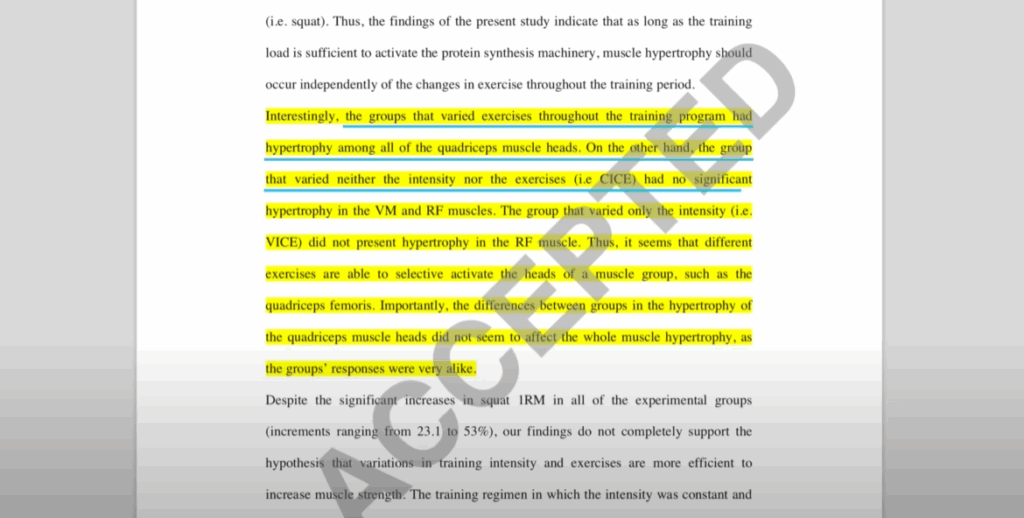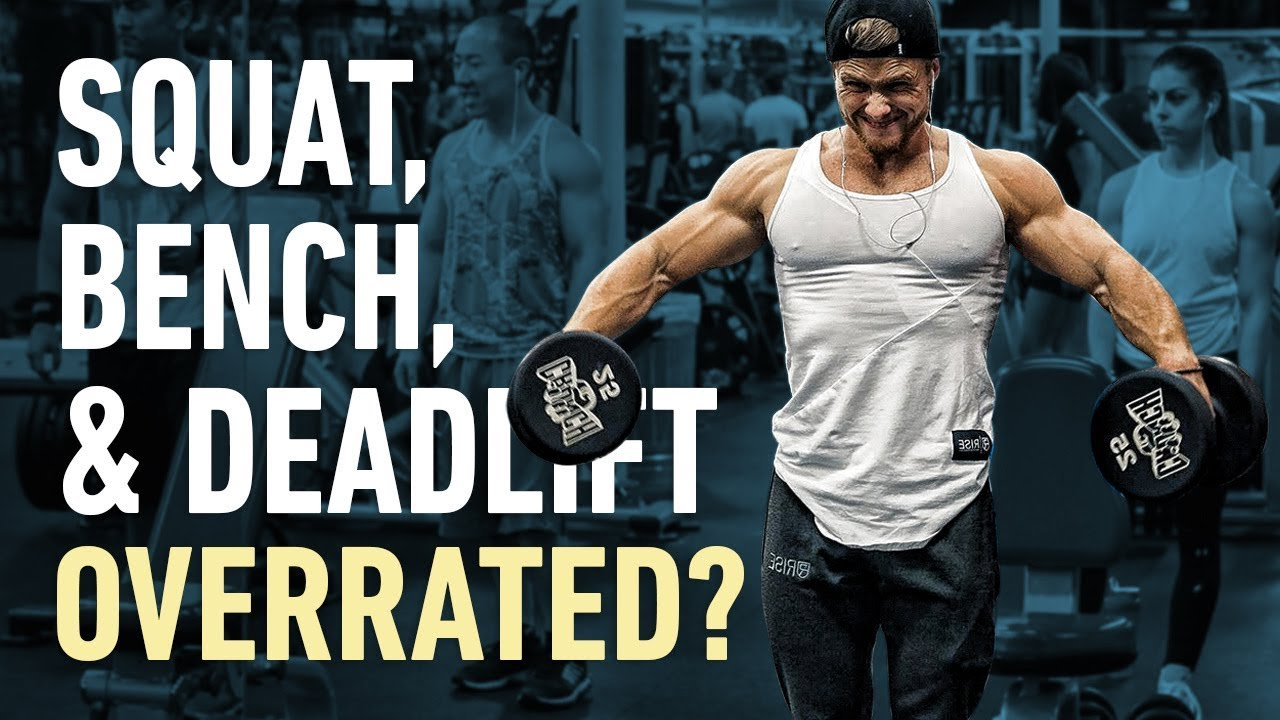As a fitness coach and nutrition expert with two decades of experience guiding individuals through their weight gain, weight loss, and bodybuilding journeys, I’ve witnessed countless trends and dogmas come and go in the iron game. One persistent debate that continues to spark passionate discussion revolves around the undisputed kings of the weight room: the squat, deadlift, and bench press. Are these fundamental compound movements truly indispensable for sculpting a championship physique, or is their importance often overstated within the realm of bodybuilding?
Recently, a provocative statement from a highly respected figure in the natural bodybuilding community, Cliff Wilson, ignited a firestorm of discussion. Cliff, renowned for his ability to craft impeccably conditioned and balanced physiques, proposed that far too many bodybuilders place undue emphasis on these “big three” lifts. His bold assertion? In bodybuilding, there are no truly “must-do” exercises, and in fact, if there were one, it might surprisingly be the dumbbell lateral raise. This certainly flies in the face of conventional wisdom for many, challenging the deeply ingrained belief that foundational strength movements are the cornerstone of all muscle development. Let’s unpack this intriguing perspective and explore the multifaceted truth behind exercise selection for hypertrophy.

Redefining “Essential” in Bodybuilding
To understand Cliff’s perspective, we must first distinguish between different fitness disciplines. In powerlifting, the objective is unequivocally to lift the maximum weight possible in the squat, bench press, and deadlift. Performance in these specific lifts is the sole measure of success. Bodybuilding, however, operates on a different premise. The ultimate goal is to build a physique that is aesthetically pleasing, balanced, symmetrical, and maximally muscular, often judged by a panel on a stage. How you achieve that physique, whether through barbells, dumbbells, machines, or even bodyweight, is largely irrelevant to the final outcome.
Consider a sculptor. Their aim is a beautiful statue. Does it matter if they used a hammer and chisel versus a rotary tool, as long as the masterpiece emerges? Similarly, in bodybuilding, the muscle doesn’t “know” if it was stimulated by a free-weight squat or a leg press. It responds to tension, progressive overload, and sufficient recovery. Therefore, from a purely aesthetic outcome perspective, Cliff’s argument holds significant weight: no single exercise is inherently essential if an alternative can achieve the same hypertrophic stimulus and muscular development.
However, as someone who spent a considerable part of my early career immersed in powerlifting, competing at national levels and coaching athletes to international success, I confess a certain affinity for the power lifts. I’ve personally witnessed the incredible transformative power these movements possess. They are unparalleled in their ability to engage multiple muscle groups simultaneously, allowing for the lifting of heavy loads and driving systemic adaptation. This undeniable efficacy often leads to a strong bias towards their inclusion in many training programs.
The Efficiency vs. Effectiveness Conundrum
The debate often boils down to two distinct philosophical approaches to training: efficiency versus effectiveness.
An efficiency-focused approach seeks to maximize results per unit of time or effort. If your goal is to build a substantial amount of muscle with the least possible gym time, then compound lifts like squats, deadlifts, and bench presses are undeniably powerful tools. They recruit vast amounts of muscle mass, allowing for significant overload and adaptation in a relatively short workout. Imagine a minimalist routine: a squat, a Romanian deadlift, a bench press, an overhead press, and a compound row. Performed twice a week, this could conceivably build a formidable physique with just a few hours in the gym. For someone aiming for a “great physique” without dedicating their entire life to the gym, this highly efficient model offers an excellent return on investment.
Conversely, an effectiveness-focused approach prioritizes optimal results, regardless of the time or effort required. For the competitive bodybuilder, who seeks to maximize every single muscle fiber and achieve peak conditioning, simply relying on a handful of compound lifts might leave certain muscles underdeveloped or disproportionate. This is where the concept of exercise variation becomes critical.
Research supports the idea that varying exercises can lead to more comprehensive muscle development. A notable study by Fonseca and colleagues (2014) demonstrated that a training program incorporating varied lower body exercises (squats, leg presses, deadlifts, and lunges) resulted in more even hypertrophy across all quadriceps heads compared to a program that only utilized squats. This suggests that targeting muscles from different angles and through various movement patterns can lead to more complete and balanced growth – a crucial factor for a bodybuilder aiming for perfection.
Therefore, while the “big three” are highly efficient for overall mass, they may not be the most effective for complete, balanced hypertrophy across all muscle groups. For instance, while squats powerfully develop the quads, they don’t optimally target all four heads of the quadriceps to the same degree as a varied leg day might. Similarly, while the bench press is excellent for the chest, front delts, and triceps, it does little for the side or rear deltoids, which are vital for shoulder width and a balanced upper body.
The Unexpected “Must-Do”: Lateral Raises and the X-Frame
This brings us to Cliff Wilson’s provocative claim about the dumbbell lateral raise. Why would such a seemingly isolated movement be considered the “closest thing to a must-do” in bodybuilding? The answer lies in its unique ability to directly target the medial (side) deltoids. These muscles are paramount for creating the coveted “X-frame” physique – broad shoulders tapering down to a narrow waist and flaring out to well-developed quads.
Many compound pressing movements primarily hit the anterior (front) deltoids. Without direct side deltoid work, even a heavily built physique can lack the width and “capped” look that truly sets a bodybuilder apart on stage. From an aesthetic standpoint, underdeveloped side delts can severely detract from the overall impression of a physique. While calves are also often neglected, they rarely make or break a bodybuilding show in the same way broad, rounded shoulders do. Similarly, while upper traps gain some isometric work from deadlifts, direct scapular elevation exercises like shrugs are typically needed for maximal development. However, again, upper traps don’t contribute to the X-frame as significantly as the side delts.

While I appreciate the spirit of Cliff’s statement, if I were forced to choose just one “must-do” shoulder exercise for overall development, I might lean slightly towards an upright row (performed with proper form to minimize shoulder impingement risk) or a cable lateral raise. The upright row hits both the side delts and the upper traps, filling two common gaps. The cable lateral raise offers a more consistent tension curve throughout the range of motion compared to the dumbbell version, where peak tension is primarily at the top. However, this is largely “nitpicking” within a hypothetical scenario. The core message remains: dedicated side deltoid work is non-negotiable for competitive bodybuilders.
Training Psychology and Injury Prevention
Another crucial aspect to consider is the psychological dimension of training. The power lifts, by their very nature, are incredibly motivating. The pursuit of personal records (PRs) in the squat, bench, and deadlift can foster an intense drive and a sense of accomplishment that is hard to replicate with isolation movements. This high level of motivation can be a powerful catalyst for consistent progressive overload, which is the bedrock of muscle growth.
However, this intensity comes with a caveat. An overly myopic focus on constantly increasing numerical PRs can lead to “ego lifting” – attempting weights that compromise form and place excessive stress on joints and connective tissues. This is where injuries often occur, not necessarily due to the inherent danger of the lifts themselves, but due to poor programming, inadequate recovery, and an unhealthy attachment to arbitrary numbers. Many former powerlifting-focused bodybuilders have learned this lesson the hard way, realizing that a minor injury can derail months of progress. Therefore, while power lifts are fantastic for motivation and mass, they require careful management of intensity and volume to ensure long-term, injury-free progress.

The Holistic Approach
In conclusion, while I hold immense respect for the power lifts and their capacity to build foundational strength and muscle mass, I largely concur with the overarching sentiment expressed by Cliff Wilson: in bodybuilding, the path to a great physique is not confined to a rigid set of “essential” exercises. Your muscles respond to the stimulus, not the specific tool.
For the aspiring bodybuilder, a truly effective program should integrate the best of both worlds:
- Strategic inclusion of compound movements: Utilize squats, deadlifts (or Romanian deadlifts for less spinal loading), and bench presses to build a robust strength base and stimulate large muscle groups efficiently. These can be particularly valuable in an offseason phase for building raw mass.
- Prioritization of exercise variation: Incorporate a wide array of movements, including machines, dumbbells, and cables, to target muscles from different angles, ensure balanced development, and address individual weaknesses.
- Non-negotiable isolation work: Dedicate specific attention to often-neglected muscle groups crucial for aesthetics, such as the side deltoids, and potentially calves or upper traps, through isolation exercises.
- Smart periodization and recovery: Balance intense training with adequate rest and progressive overload that prioritizes safety and longevity over fleeting PRs.
Ultimately, the most successful bodybuilding journey involves a blend of intelligent programming, unwavering consistency, and a profound understanding that the goal is not to be the strongest lifter, but to sculpt the most impressive physique. Embrace variety, listen to your body, and always prioritize the stimulus over the specific exercise.
Do you find yourself leaning more towards an efficiency-driven or effectiveness-driven approach in your training?



